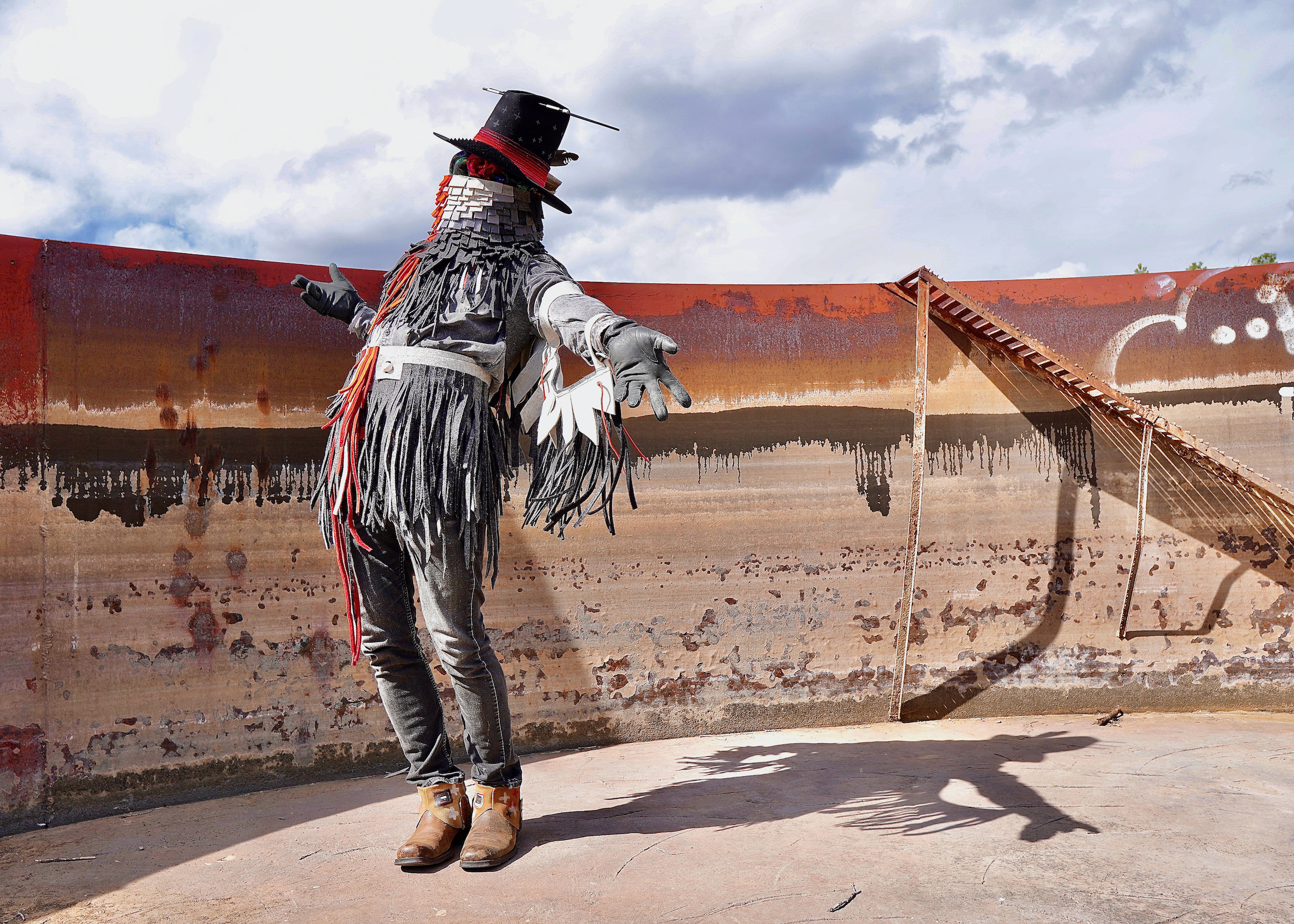LOS ANGELES — “Maybe ‘apocalypse’ is the opportunity we are looking for, even if we don’t quite know it yet.” This message from Santa Clara Pueblo sculptor Rose B. Simpson is printed at the feet of her over-eight-foot-tall figurative sculpture “Ground (Witness)” (2016) at the Autry Museum of the American West. The artist’s evocative “maybe” can provide a generative perspective in this political moment, as many Indigenous communities continue to survive the apocalyptic reality of European settler colonialism.
Future Imaginaries: Indigenous Art, Fashion, Technology, in which Simpson’s towering sculpture is situated, was organized by the Autry Museum as part of the Getty Foundation’s PST ART: Art & Science Collide program and runs through June 21, 2026. With over 50 pieces on view, the show aims to challenge specific preconceived notions of what constitutes Native art through the work of contemporary Indigenous artists who explore ideas of time, technology, futurism, and science. It includes a range of tribal representation and multidisciplinary approaches that draw from ancestral knowledge and technology, interrogating how future generations might preserve and adapt traditions to carry them forward.

“Suiting Up: Armor, Regalia, Haute Couture,” the first of three titled sections, takes the form of a circle display focusing on fashion, performance, and ceremonial regalia. Pieces by artists including Wendy Red Star (Apsáalooke/Crow) and Jontay Kahm (Plains Cree) emphasize their interest in refashioning traditional designs by taking into account the influence of community, environment, and resources.
A monumental portrait from Caroline Monnet’s (Anishinaabe/French) Echoes from a Near Future series (2022) faces the displayed fashion pieces. Together, the six women and three young children gazing out from the photo present a regal blend of traditional Indigenous art forms, like cradleboard, with repurposed materials, such as reflective coating for laminate floors. Videos of performances by Catherine Blackburn (Dene/European) and Cannupa Hanska Luger (Mandan/Hidatsa/Arikara/Lakota) accompany their wearable art pieces, illustrating them as embodied works.
“I see relationality embedded in Indigenous fashion because you’re actually clothed in the knowledge of your ancestors, clothing that’s made for you now,” explains co-curator Kristen Dorsey (Chickasaw Nation) in the exhibition catalog. “It’s reaching through time, upending the idea that time is linear.”
Visitors might recognize pop culture references in the “Indigenizing Sci-Fi” section. Mainstream science fiction world-building has long taken inspiration or outright stolen from Indigenous communities, including for Avatar’s Na’vi and Star Wars’s hairstyles from Hopi women for Princess Leia’s bun hairstyle. But in this section of the exhibition, artists including Will Wilson’s (Diné) with “K’ómoks Imperial Stormtrooper (Andy Everson), Citizen of the K’ómoks First Nation” (2017) flip the script and reclaim motifs of the sci-fi genre within their own contexts.

The centerpiece of the third and final section, “Critical Mass: Indigenous Technologies, Ecologies, and the Future,” is an interactive sculpture by Kite (Oglála Lakȟóta) and Devin Ronneberg (Hawaiian/Okinawan) titled “Ínyan Iyé (Telling Rock)” (2019). Spider-like braided hair and tendrils of string lights spring from a large acrylic dome fixed to the ceiling and custom circuits connect to lights and sensors that react to visitors’ motions, highlighting the relationship between human and non-human entities. An AI component responds to the movement of the 15-foot braids when people interact with them, triggering audio frequencies melded with voice recordings spoken in the Lakȟóta language.
Elsewhere, Tammy Tallchief (Cayuga) expands our ideas of food sovereignty and Indigenous plant knowledge as futuristic technology with her beaded assemblage, “Space Farmer with Radishes” (2010–22), whose titular vegetable has now been successfully cultivated in outer space.
Fittingly housed in a room of its own is “Sirens and Sikas” from the series ReVOlt 1680/2180 by Virgil Ortiz (Cochiti Pueblo). The multimedia installation functions as a teaser to his epic alternate history of the 1680 Pueblo Revolt and what the 22nd century would look like if Spanish colonizers had been overthrown. He takes the apocalyptic reality as an opportunity, as Simpson suggested at the outset, to wield time travel, technology, and agency in the service of crafting an imagined future.
“Too often, we’re thinking about a piece of hardware, a computer or a phone, the static, inanimate things that do wonderful and amazing things for us all the time,” says co-curator Amy Scott in the catalog. “The Indigenous view of technologies and knowledge systems suggests a greater awareness of entire systems, including intimate knowledge of specific ecologies passed down through generations. It is generational and ancestral and shows awareness of and attunement to the world around us, organic and otherwise.”






Leave a Reply